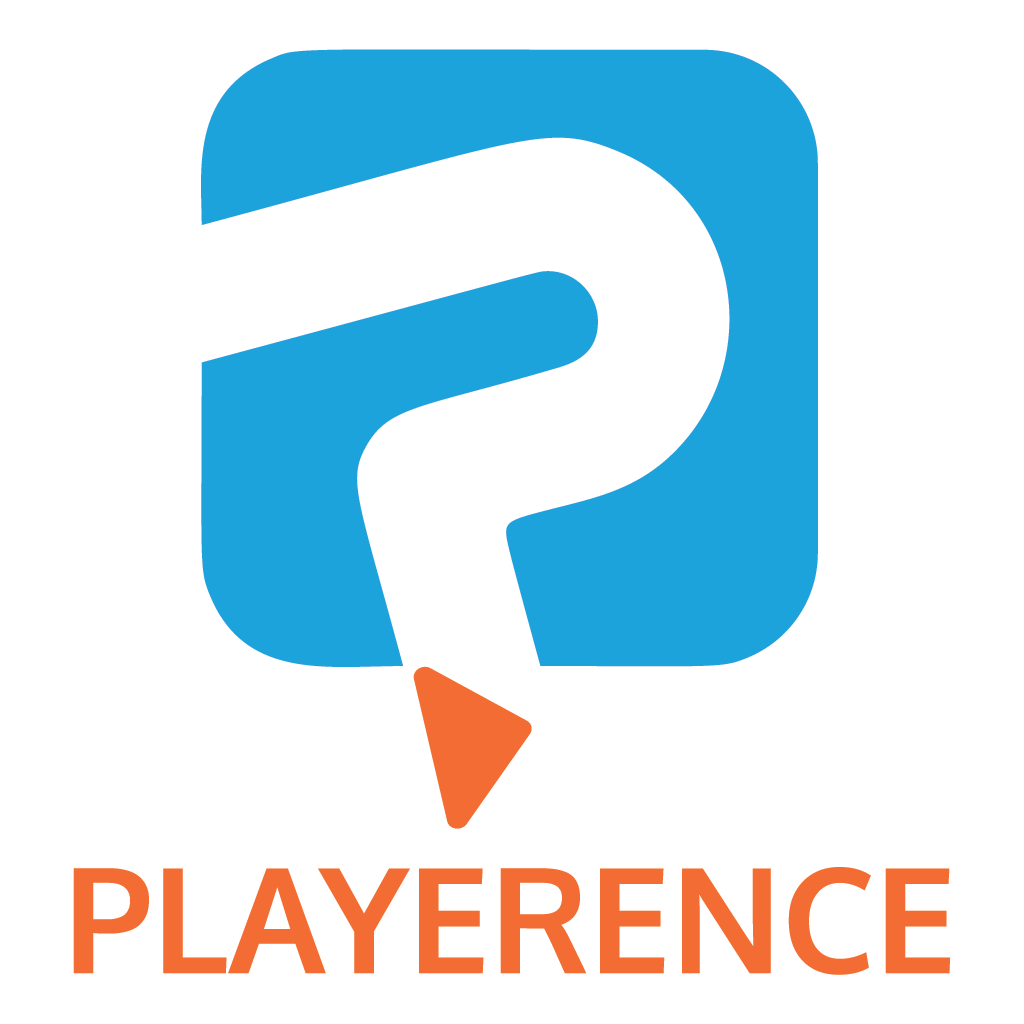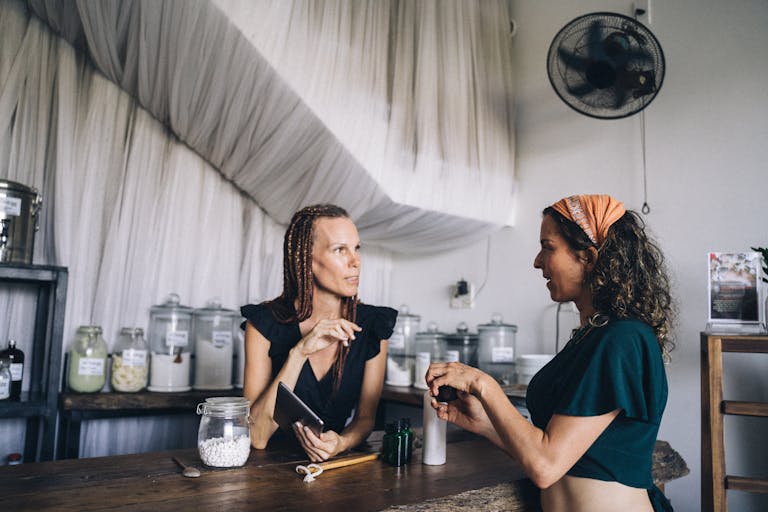Retail has undergone a transformation, driven by the blurring lines between online browsing and in-store purchasing. Today, digital marketing isn’t just about clicks and views; it’s about forging a deep connection that compels a shopper to step through a physical store’s doors. This synergy between two seemingly disparate worlds has become a linchpin of success for modern retailers.
The concept is straightforward: create a seamless omnichannel strategy that leverages the strengths of both digital and traditional retail. Tools like Playerence tap into this trend, offering digital engagement platforms that serve as a magnet for online consumers and encouraging them to transition smoothly into the tactile world of in-store shopping.
It all boils down to understanding the customer. Why should they leave the comfort of their screen to visit your store? The answer often lies in providing something of unique value that can only be accessed or fully appreciated in person, like a special deal or a prize waiting to be collected.
Retailers are now tasked to master this digital-physical connection to stay relevant. In the following sections, I’ll guide you through understanding customer motivations and how technology like Playerence can bridge the gap between the digital allure and the physical experience.
Understanding Customer Motivations in Digital Engagement
The heart of any successful digital marketing strategy lies in understanding the people it aims to engage. I focus on the psychological elements that influence how customers interact with digital content and what ultimately drives them to make a purchase, either online or in a physical store. A good starting point is analyzing behavioral tendencies, preferences, and the purchasing patterns of different consumer segments.
I consider the immense value in acquiring knowledge about what customers like and dislike, along with their reactions to various offers. This information can guide the creation of compelling digital marketing campaigns that are likely to resonate and lead to action. Tools like quizzes and surveys can be instrumental in this discovery phase, particularly when hard data on consumer behavior may be incomplete or outdated.
Once we comprehend the actions that lead to customer engagement on digital platforms, we can tailor the online experience to what they find most attractive. If it’s a special deal that they seek, or perhaps a gathering of loyalty points, understanding these desires allows us to forge offers that will feel customized and irresistible to the consumer.
The knowledge that is drawn from these insights helps to personalize marketing efforts on platforms such as Playerence. For instance, if data shows that a group of customers values exclusivity, a marketing campaign through Playerence might offer a VIP experience that can only be accessed via an in-store visit. These strategies capitalize on the motivating factors to create a seamless bridge between digital engagement and brick-and-mortar shopping.
Designing Offers That Connect Digital Touchpoints to In-Store Experience
Crafting the right offers is critical in bridging the gap between the digital and physical realms of shopping. It’s essential to go beyond the screen and create incentives that encourage customers to step into stores. Exclusive deals are a starting point; they not only draw attention but also give shoppers a reason to visit. Think of it like this: your digital platform acts as a lure, and the in-store offer is the hook.
Putting together something unexpected, like special prizes that can be claimed only in-store, creates a compelling reason for online visitors to become foot traffic. The anticipation of picking up a prize can be a delightful prospect, strong enough to motivate a transition from the digital space to a physical location.
Loyalty points can play a significant role as well. They’re not just numbers on a screen but currency for exclusive experiences or savings in-store. By incentivizing customers to accumulate and redeem points through in-person visits, retailers can foster a strong, ongoing relationship between online engagements and the in-store experience.
When designing these offers, keep in mind the power of personalised communication. Direct messages that congratulate a customer on earning a reward and invite them to redeem it at their local store can make all the difference. This level of personal attention captures interest and sets the stage for moving into the in-store environment.
Developing VIP Experiences to Enhance Customer Relationships
In the realm of retail, exclusivity can be a golden ticket. It’s about carving out a slice of the shopping world that feels like it’s made just for the individual. I see the development of VIP experiences as an essential strategy for retailers who want to deepen their relationship with customers and give them compelling reasons to step from the online sphere into the tangible world of in-store shopping.
Imagine receiving an invite to a private showing of a new fashion collection or a limited guests-only event where you can meet designers. This isn’t just a promotional tactic; it’s a cultivation of community and brand loyalty that starts in the digital space.
Digital platforms like Playerence allow retailers to recognize and reward their most engaged users. By using the data available, businesses can create personalized experiences that cater to the specific tastes and preferences of their customers. An augmented reality dress-up feature online, for instance, could lead to an exclusive fitting session in-store, where customers can try the outfits they loved virtually.
The success stories are everywhere. For example, a renowned retailer offered a ‘behind the scenes’ store tour for their online customers, generating a buzz that echoed back into the digital realm through shared social media stories. It’s this blend of exclusive, personal interactions with the global reach of digital marketing that can establish a deeper, lasting connection with customers.
Maximizing the Value Proposition to Make Customers Feel Special
In my experience, personalization is not just a buzzword; it’s the cornerstone of effectively converting digital engagement into in-store footfall. The goal here is to carefully carve out offers that resonate personally with your customers. You know those moments when an offer seems like it was made just for you? That’s the feeling you want to evoke.
I segment customers based on their previous behavior, interests, and even demographic details to ensure that the value proposition feels tailor-made. For instance, if a segment of your audience frequents a specific store location, sending them an offer related to that store is a direct hit. It’s about making each customer feel like they’re getting the inside scoop—something exclusively designed for them.
Comparing tangible rewards to exclusive access is like weighing gold against a key to a secret garden. Both have their allure, but they speak to different desires. While some customers are motivated by the immediate gratification of a tangible reward, others relish the status and exclusivity that come with special access or experiences. The art is in knowing your audience and striking the balance that will drive them to step into your store.
When I advise businesses, I emphasize the significance of testing various offers. It’s only through trial and response that you’ll discover the sweet spot for your clientele. Sometimes it’s a matter of combining offers—using points to unlock a VIP experience, for instance. This not only increases the perceived value but also creates a compelling reason for customers to connect with the brand on multiple levels.
By continually analyzing customer reactions to different propositions, you create a strategic approach that’s ever-evolving. It’s this agility that keeps the modern customer engaged and open to transitioning from scrolling through an app to stepping through your doors.
Navigating the Leap from Digital Interaction to Physical Action
The transition from an online ad or promotion to a customer physically stepping into your store isn’t always straightforward. What pushes someone to make that trip, to invest that time? The key is understanding the triggers that convert interest into action. An effective digital campaign takes note of behavioural cues and tailors experiences accordingly.
In the realm of retail, behavioural nudges are slight pushes in the right direction that can make all the difference. Think of them as digital whispers guiding your customers towards your door. These nudges could be strategically timed discounts, personalized suggestions, or even an invite to a special event. When combined with economic incentives, such as limited-time offers, they become powerful motivators.
For instance, picture an email that lands in your customer’s inbox. It’s not just another message; it’s a personalized invitation to an exclusive sale that ends in three days. By creating a sense of urgency, you’re not only providing information but also urging your customer to act swiftly.
The success of bridging the digital gap also hinges on timely reminders and notifications. With the average person receiving an onslaught of digital content daily, it’s easy for your message to get lost in the chatter. A well-timed reminder can serve as the nudge a customer needs to move from considering your in-store offer to taking the next step of visiting your location.
Now, as we transition from understanding these action-driving strategies, it’s critical to focus on how we can measure the impact these initiatives have on in-store traffic. Section 7 will delve into the analytics tools and metrics that can help us assess the effectiveness of our digital campaigns and refine them for even greater success.
Measuring the Impact of Digital Initiatives on In-Store Traffic
When it comes to assessing how well digital marketing efforts translate to foot traffic in physical stores, specific tools and metrics are indispensable. I use performance analytics to pinpoint exactly which digital initiatives are generating in-store visits and which ones need rethinking. It’s about connecting the dots between online interactions and offline purchases.
Effective metrics include tracking redemption rates of online coupons in-store, monitoring foot traffic patterns in relation to digital campaign timings, and measuring sales uplift from customers engaged with digital content. A reliable correlation between a spike in store visits with a recent online campaign is a strong indicator of success.
Real-world case studies shed light on how businesses successfully bridge the digital-physical gap. Whether it’s a QR code on a social media ad that leads to an in-store event or an online contest that requires winners to pick up their prize from a local branch, these stories offer invaluable insights.
Data analysis also plays a pivotal role here. By diving deep into customer purchase history, loyalty app interactions, and online behaviour, I can refine strategies that encourage store visits. This continuous loop of tracking, analyzing, and optimizing is what turns good marketing into GREAT campaigns that drive results.
With these insights under my belt, it’s clear that stepping into section 8 involves strengthening these approaches through an agile feedback mechanism. This will not only improve current strategies but also inform future ones, ensuring retail campaigns keep pace with evolving consumer expectations and shopping behaviours.
Integrating Feedback Loops to Continuously Improve Engagement
Feedback isn’t just helpful; it’s the lifeblood of any business seeking to thrive. Whether a campaign is digital or physical, the responses from customers are invaluable. They inform you of what’s working and what isn’t. Every click, every purchase, and even every non-action tells a story.
To capitalize on this, set up systems that can capture real-time feedback. After rolling out a digital initiative meant to drive in-store foot traffic, monitor the reactions. Are customers commenting on social media? What are they saying? Use social listening tools to keep a pulse on the conversation.
It’s also about the in-store feedback. Train staff to gather insights from customers, encourage them to share experiences via apps or kiosks. Use smart technology like QR codes to prompt immediate responses. The quicker the feedback loop, the faster you can adapt and enhance your strategies.
But don’t stop at collection. Analyze and act on feedback. Maybe it’s tweaking a deal or revamping a reward system. Recognize patterns, understand preferences, and modify your approaches. Such reactive adjustments display to customers that you value their input, fostering a stronger connection.
Look beyond the numbers. While sales figures and foot traffic are quantifiable, qualitative feedback is equally important. Touchpoint sentiment analysis, for instance, can help understand the emotions behind customer interactions, enabling a more nuanced approach to your marketing efforts.
Why is this continuous improvement vital? It’s about staying relevant and maintaining a competitive edge. Use feedback to iterate and innovate, creating new reasons for customers to return, both digitally and physically. Remember, the goal is not just to attract but to nurture and build loyalty.
Conclusion: The Future of Retail in a Digital-First Landscape
In this exploration, we’ve uncovered the integral connection between digital marketing strategies and the tangible in-store experience. As retailers evolve within a digitally-dominated market, the blend of online engagement and physical shopping becomes not just preferable, but necessary.
A digital engagement platform like Playerence serves as a compelling tool, anchoring customers in an interactive digital realm while enticing them with real-world benefits. The ultimate goal is to create a cohesive journey from screen to store, where every click brings the customer closer to the checkout counter in a brick-and-mortar setting. When that journey is driven by an understanding of customer motivations and behavior, rooted in behavioral psychology and economics, the path to conversion is both clear and actionable.
Matching digital initiatives with customer desires isn’t static; it demands agility and a commitment to innovation. As retailers harness the power of platforms like Playerence to craft personalized offers and VIP experiences, they’re investing in a future where convenience, personalization, and satisfaction reign supreme.
But what does the future really hold? If one thing is certain, technology will continue to shape consumer behavior. Virtual and augmented reality could soon transform the way we shop, blurring the lines even further between digital exploration and physical interaction. As long as retailers keep the E-E-A-T principles at the forefront, ensuring that they create experiences grounded in expertise, authoritativeness, and trustworthiness, they will be well-equipped to navigate this evolution.
The strategic blend of digital engagement with real-world shopping experiences isn’t a one-and-done deal; it’s an ongoing conversation with your customer base. The insights and strategies discussed here are your starting blocks. Use them to keep pace with the rapidly changing retail landscape, anticipating your customers’ needs, and delivering on the promise of an exceptional shopping journey.







